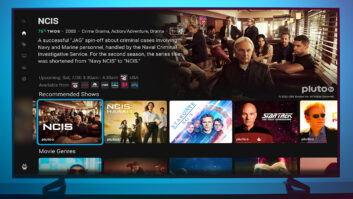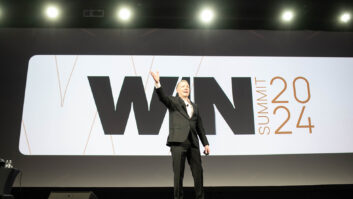Advertisers should be grateful for a small bone TiVo tossed its way. The Alviso, Calif., company’s newest digital video recorder, TiVo Premiere, enables the viewer to touch the remote’s Advance button to turn a 30-second commercial into a drive-by skip lasting all of one second. Unlike fast forward, play resumes automatically. The function is cumulative, so pressing Advance in rapid-fire fashion empowers the user to take out a 3-minute block of ads for a 6-second spin.
Considering the way an unauthorized though readily available hack on earlier TiVo models rubbed out commercials utterly by leapfrogging them 30-seconds at a time, advertisers should be high-fiving each other. In today’s crowded ad space, getting even one second’s worth of attention represents creative possibilities.
Nevertheless, the new math is a challenge to advertisers. If they’re going to make any impression — let alone entice people to back up and play the commercial in its entirety — they must hook viewers in the time it takes to mouth “one-Mississippi.” So, it’s important that the product logo linger on screen for the duration of the commercial. Call it strategic placement, but it’s really survival placement since even when scanned at high velocity a static billboard can actually be noticed.
Already, brands like CBS have been able to leverage a relationship it has with TiVo in which TiVo’s thumbs-up icon sits atop the screen the entire length of promos for many of the network’s new series. Only households watching TV through TiVo see the overlays. Even at drive-by speed, it takes just a second for viewers to get the message that by pressing thumbs-up, the show will be recorded.
The TiVo-CBS partnership represents a remarkable shift from a decade ago when CBS along with movie studios sued SonicBlue, maker of ReplayTV, an early TiVo rival, for empowering DVR viewers to bypass the commercials without having to pick up the remote. ReplayTV models incorporated the Commercial Advance feature that used an algorithm able to identify silent black frames which typically bookended blocks of commercials. First seen on some VCRs, the feature worked reliably about 80 percent of the time. (It tended to skip whole scenes of Law & Order due to the show’s liberal use of black title bumpers and hushed audio that accompanied the show’s trademarked ka-bung.)
ReplayTV was easily the greatest consumer electronics product I ever brought home because it supplied the most precious gift of all – time. Experiencing 60 Minutes in 45 or fewer minutes without once touching the remote afforded me the opportunity to do the dishes, walk the dog or read the paper. (Alas, what I ended up doing mostly was watching more TV.)
Broadcasters and studios weren’t so enamored. In their suit against SonicBlue, the plaintiffs claimed that the company was in effect repackaging its programs by auto bypassing the commercials. By 2003 the company was out of business, due as much from mounting legal bills as increased competition from cable and satellite operators who started offering their own DVRs with no up-front hardware costs. To placate its commercially-supported program suppliers, most cable operators offered fast forward but not a 30-second quick skip function.
TiVo needed to distinguish itself since its box was a tougher sell. Its DVR was sold, not rented, and there was a subscription separate from users’ cable bills. So, at the same time when Commercial Advance on ReplayTV pushed viewer empowerment to the extreme at the expense of the advertising community, TiVo, which was trying to balance its business model between selling services to broadcasters and attracting subscribers, came up with a compromise. It would ship the TiVo remote with fast forward but let users figure out how to reprogram the advance button for quick skip. Though there were no instructions in the TiVo manual, the code was widely available by searching the Internet. TiVo never disabled the function.
The introduction of TiVo Premiere brings users of the company’s newest DVR a nuanced form of quick skip that works right out of the box. Instead of commercials dissolving in milliseconds as you would expect from a hard drive’s random access capability, they stream by smoothly like a VCR fast-forwarding tape.
As a veteran TiVo user, I’m captivated by this hybrid quick skip that lets me spy what I’m missing and go back if something looks interesting. During the run-up to Election Day, I never once had the urge to view an attack ad. What does get my attention is a coming attraction for a movie or almost any big-budget commercial I hadn’t seen like Conan O’Brien in India for American Express. During Mad Men, I regularly hit the replay button upon spotting Unilever commercials for such products as Vaseline and Suave Shampoo that were being pitched at a Mad Men-like ad agency. With my previous TiVo model, I might have missed these contextually-appropriate commercials entirely to my regret.
Maybe the purveyors of commercials don’t appreciate the subtleties of skip the way DVR devotees do. But among marketers, the idea of advertising to a captive audience is a fading dream unless you count live tent pole events like the World Series or cinema-goers stuck in their seats awaiting the movie to start. At a time when 37 percent of U.S. households now have DVRs, viewers are increasingly likely to delay watching a show specifically to avoid commercial interruptions. Now, marketers are getting a break, albeit a subtle one best appreciated in the history of commercial skip.
Compared to vaporizing the commercials, cumulative drive-by quick skip is a win-win for advertisers and viewers alike.
_______________________
TiVo user Michael Antonoff writes articles and hosts videos for the online retailer, B&H Photo. He was technology editor of Sound & Vision and a senior editor at Popular Science.













